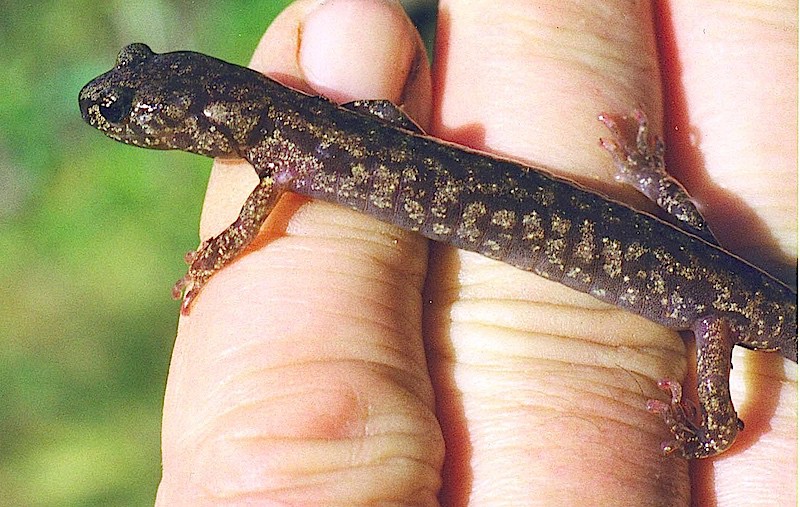Some stories bear retelling – perhaps because there are newcomers who haven’t heard them before, perhaps because there are oldtimers who didn’t pay attention the first time. Or, perhaps, because the concept of cumulative learning (especially on a societal level) is just a hopeful notion – and the old, much resented, high school saying: “repetitio est mater sapientiae” has some merit after all …
So it is with the story of the Salamanders on Marina Island, and the mystery they represent. A mystery that, at least in its general outline, was solved on Tideline in May 2003 – or rather (to give credit were credit is truly due) by a zoologist, whose name is Todd Jackman, in a paper published in1998 (Canadian Journal of Zoology). The story addresses also the, maybe trivial, but persistent, disagreement concerning which species the Marina Island Salamanders actually belong to.
Here then is the retelling of the 2003 Tideline narrative (with a nod to Barry Saxifrage, who raised the question more than 12 years ago):
Aside from the obvious delight we can all take in the presence of such dainty amphibian beauty at (one of) our shores, the question is: how did the population of Salamanders ever get established on Marina Island?
Writing for the Canadian Journal of Zoology in 1998, Todd Jackman presented some intriguing evidence towards a possible answer. Clouded Salamanders (Aneides ferreus) had long been reported from California, Oregon, not from Washington State (!), and then, again, from a few locations in British Columbia, chiefly from Vancouver Island.
Jackman subjected the various populations to genetic analyses and determined that the California populations are distinct from those in Oregon, to a degree that warranted the creation of a new species for California. Furthermore, and surprisingly, the BC Salamanders were clearly related to the California populations, inspiring Jackman to call the new species Aneides vagrans, the Wandering Salamander. (Because A. ferreus was first described from locations in Oregon, the old species name remained there.)
Jackman speculated: since these Salamanders live mainly under the bark of trees, and since the bark of California’s Tan Oak (Lithocarpus densiflorus) was exported to various BC leather tanneries during the 19th century, they probably inadvertently hitched rides on several of the bark shipments. The scenario is plausible: the peeled Tan Oak bark was stacked outdoors and typically left for a couple of weeks before being shipped out. At the receiving end, the same situation would unfold in reverse. Plenty of time and opportunity for the little stow-aways to em- and disembark (pardon the pun). Tanneries were operated in Richmond, Victoria and Nanaimo, and the imported Salamanders quickly established themselves in the surrounding areas.
How did they manage to colonize several of the smaller islands in the Strait of Georgia? Perhaps on pieces of Tan Oak bark, spilled during unloading, or, after seeking shelter among beach logs and driftwood (remember, they prefer to live under bark) they were blown by the prevailing south-east winds all the way to Marina Island. As we know: Marina Island collects a lot of driftwood, up here at the northern terminus of the Strait.
So which species do the Marina Island Salamanders belong to? Are they Clouded or are they Wandering? It all comes down to whether you accept Jackman’s assessment of the Oregon and California populations. He makes a pretty good argument (and not only based on genetics) for splitting the Aneides populations in question into two species. And having made it from California all the way to Marina Island, a distance of more than 1000 kilometres, makes the epithet vagrans seem more than appropriate.



